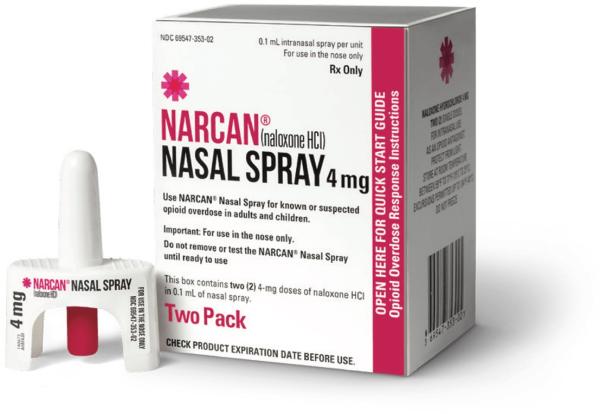Narcan Disease Interactions
There are 4 disease interactions with Narcan (naloxone).
Naloxone (applies to Narcan) CV disorders
Major Potential Hazard, Moderate plausibility. Applicable conditions: Cardiovascular Disease
Therapy with naloxone in patients with preexisting cardiovascular disorders should be closely monitored for hypotension, hypertension, ventricular tachycardia or fibrillation, and pulmonary edema in an appropriate healthcare setting. Clinical monitoring of cardiovascular status is recommended.
Naloxone (applies to Narcan) liver disease
Moderate Potential Hazard, Moderate plausibility.
The safety and effectiveness of naloxone injection in patients with liver disease have not been established. Caution should be exercised when naloxone is administered to patients with liver disease.
Naloxone (applies to Narcan) renal
Moderate Potential Hazard, Moderate plausibility. Applicable conditions: Renal Dysfunction
The safety and effectiveness of naloxone injection in patients with renal insufficiency/failure have not been established. Caution should be exercised when naloxone is administered to these patients.
Naloxone (applies to Narcan) septic shock
Moderate Potential Hazard, Moderate plausibility. Applicable conditions: Sepsis
Naloxone has been shown in some cases of septic shock to produce a rise in blood pressure that may last up to several hours; however, this pressor response has not been demonstrated to improve patient survival. In some studies, treatment with naloxone in the setting of septic shock has been associated with adverse effects, including agitation, nausea and vomiting, pulmonary edema, hypotension, cardiac arrhythmias, and seizures. The decision to use naloxone in septic shock should be exercised with caution, particularly in patients who may have underlying pain or have previously received opioid therapy and may have developed opioid tolerance.
Switch to professional interaction data
Narcan drug interactions
There are 30 drug interactions with Narcan (naloxone).
More about Narcan (naloxone)
- Narcan consumer information
- Check interactions
- Compare alternatives
- Pricing & coupons
- Reviews (5)
- Drug images
- Side effects
- Dosage information
- During pregnancy
- FDA approval history
- Drug class: antidotes
- Breastfeeding
Related treatment guides
Drug Interaction Classification
| Highly clinically significant. Avoid combinations; the risk of the interaction outweighs the benefit. | |
| Moderately clinically significant. Usually avoid combinations; use it only under special circumstances. | |
| Minimally clinically significant. Minimize risk; assess risk and consider an alternative drug, take steps to circumvent the interaction risk and/or institute a monitoring plan. | |
| No interaction information available. |
See also:
Further information
Always consult your healthcare provider to ensure the information displayed on this page applies to your personal circumstances.


